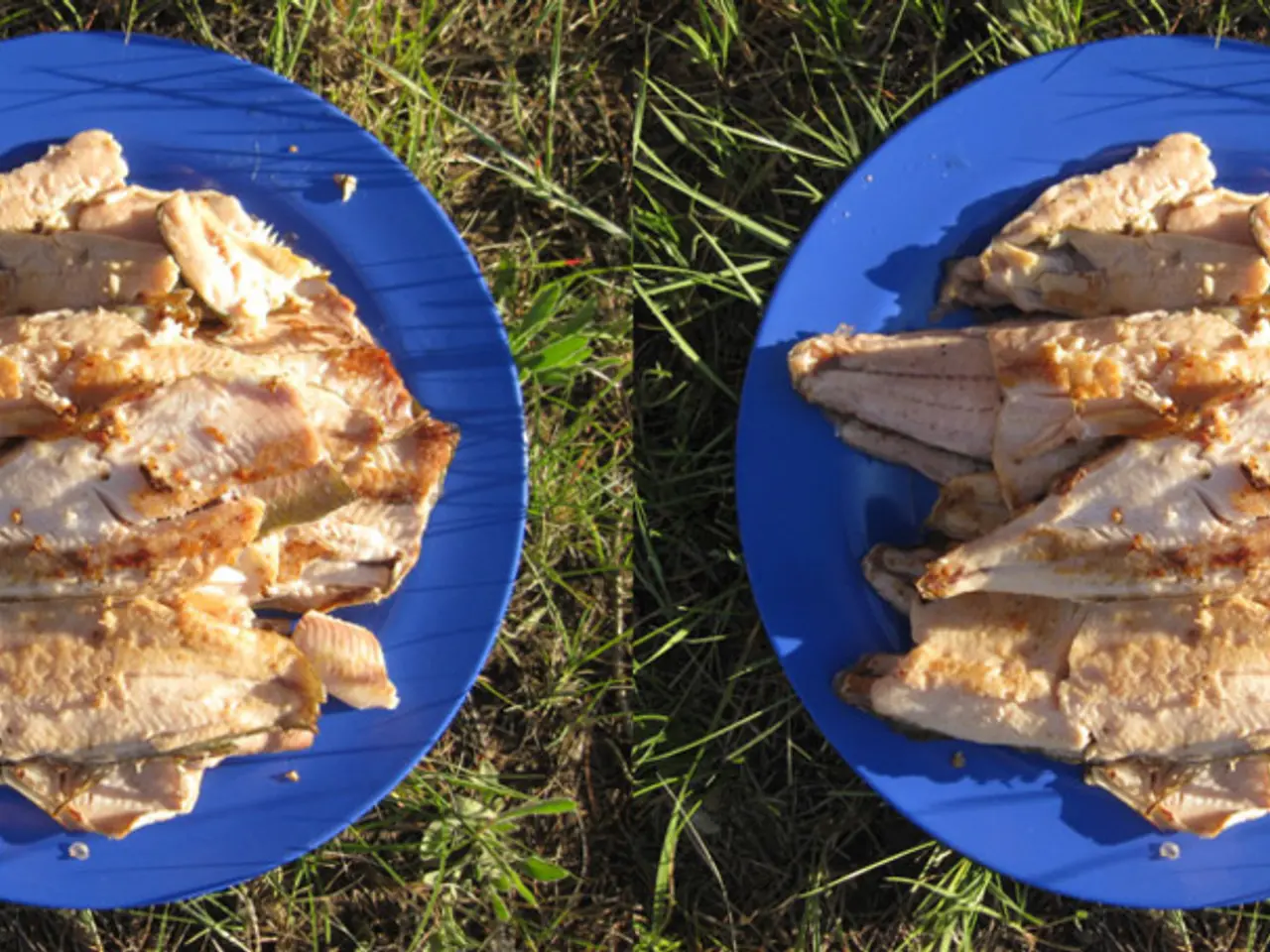Detrimental to weight loss: These ten sausages serve as caloric time bombs
New Take:
Shift your focus when chomping on sausages, folks. Some of these puppies can be downright calorie bombs! And with over 1.5k varieties in Germany alone, it pays to know which ones to avoid.
Germans are nuts about sausages, as evident in their whopping 1500 different types. Roughly 500 raw, 800 cooked, and 365 of 'em smoked - every which way to taste them! Here's a lowdown on ten fattiest sausages that'll make your jeans feel snug in no time.
The Ten Biggest Calorie Offenders
Eyeballs roll when it comes to chopped segments of fat in these sausages. Check the nutritional label before popping any of these bad boys into your mouth:
- Landjäger: 48g fat per 100g
- Mettwurst: 41.6g fat per 100g
- Teewurst: 38g fat per 100g
- Cabanossi: 37.4g fat per 100g
- Spreadable Mettwurst: 34.5g fat per 100g
- Fine liver sausage: 34g fat per 100g
- Mortadella: 32.8g fat per 100g
- Cervelat sausage: 31.9g fat per 100g
- Veal liver sausage: 9g fat per 100g
- Coarse liver sausage: 29.2g fat per 100g
Opt for these leaner alternatives to get your sausage fix:
- Chicken and turkey breast slices: 1g of fat per 100g
- Pickled sausage in aspic: 3g of fat per 100g
- Cooked ham: 3.7g of fat per 100g
- Loxschinken: 4.4g of fat per 100g
- Corned beef: 6g of fat per 100g
- Roast beef slices: approximately 6g of fat per 100g
- Kasseler ham slices: 8g of fat per 100g
- Smoked and air-dried ham: 8 to 10g of fat per 100g
- Chicken Mortadella: 10g of fat per 100g
- Beer ham: 11g of fat per 100g
Vegetarian options might be the better bet, as per the German Society for Nutrition. They recommend no more than 300-600g of meat and sausage per week. Consuming excessive amounts can lead to health problems, such as the formation of carcinogenic nitrosamines and harmful effects from high salt content.
In recent years, meat consumption in Germany has been on the decline. In 2019, it averaged 59.5kg per capita per year, down to 57.33kg in 2020 and projected to be just 53.2kg by 2024. This could be due to the wide variety of sausage alternatives now available. Some opt for plant-based proteins that mimic the taste, texture, and consistency of sausage or meat. A key advantage? Healthier ingredients - think rapeseed, sunflower, coconut, or olive oil instead of animal fat.
Remember, though: not all plant-based sausages are created equal. Some products contain large amounts of additives, thickeners, stabilizers, flavor enhancers, aromas, yeast extracts, gelling agents, and colorants. And even some of these "healthier" options can have a high sugar, salt, and fat content. Also, genetically modified soy might be used in the production of some plant-based meats. Always read the label to make an informed choice!
- The science behind sausage consumption reveals significant differences in fat content among various types, with Landjäger having 48g of fat per 100g, making it one of the fattiest.
- In contrast to high-fat sausages, health-and-wellness-conscious individuals may choose low-fat alternatives like chicken and turkey breast slices, which contain only 1g of fat per 100g.
- Fitness-and-exercise enthusiasts might find it beneficial to focus on weight-management, as reducing consumption of fattier sausages can contribute to a healthier lifestyle.
- As nutritional awareness grows, food-and-drink preferences could shift towards plant-based, low-fat options, potentially lowering overall weight-management challenges and enhancing food-and-drink habits with healthier ingredients.




